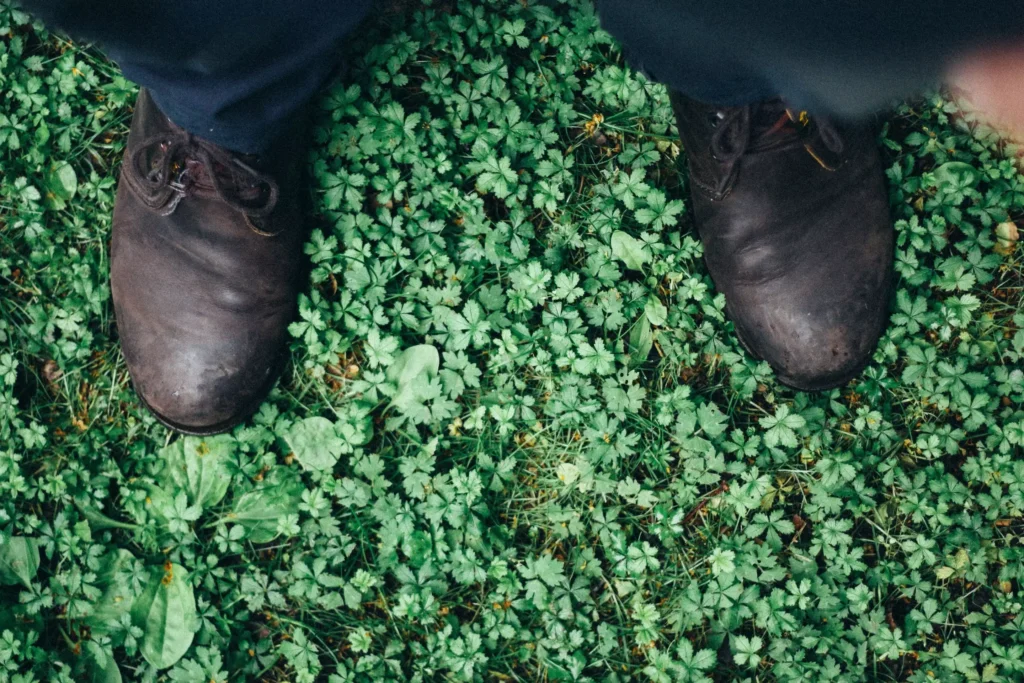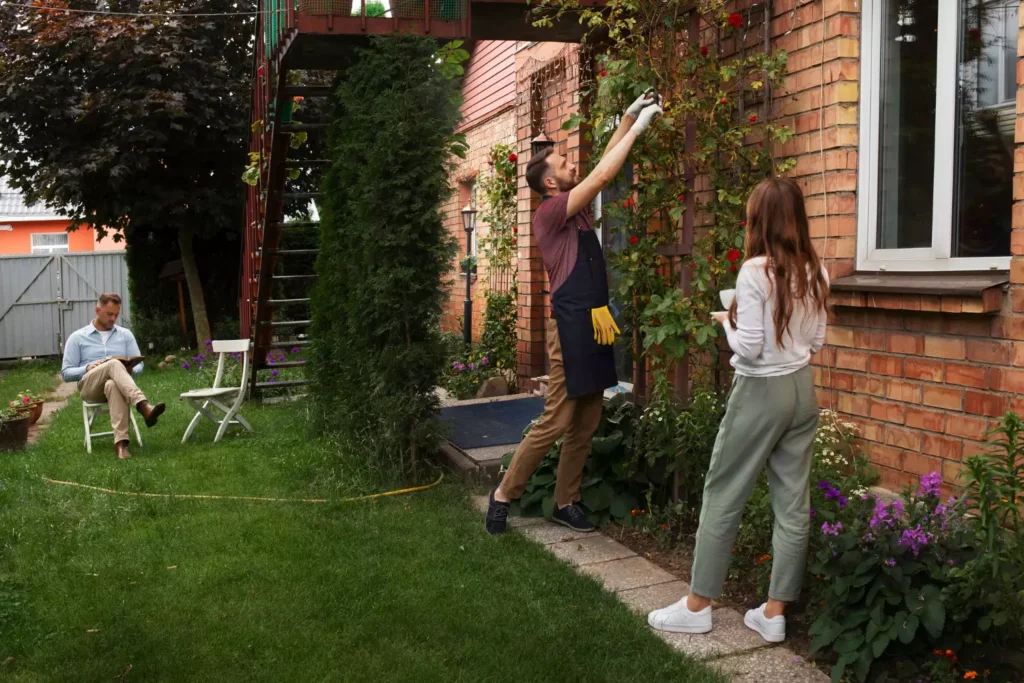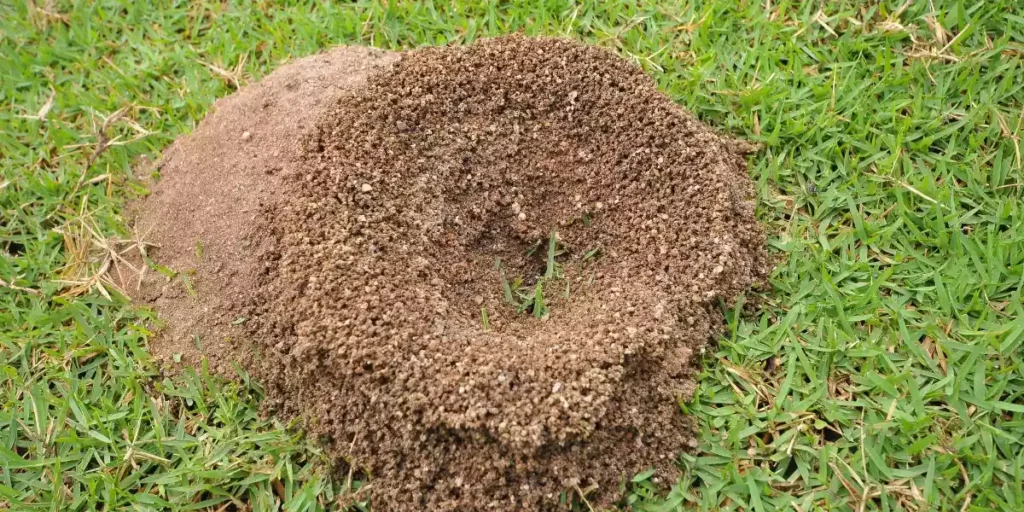Gardening has always been a passion of mine, so when I discovered hydroponic gardening, I was excited to learn about the different growing mediums available for this type of gardening.
One of my favorites is rockwool cubes, which are a great choice for hydroponic gardening. Rockwool cubes provide excellent water retention and airflow, making them perfect for growing plants in a hydroponic system.
Imagine the lush green of your plants, thriving and growing in rockwool cubes. It’s a beautiful thing!
In this article, I’ll be discussing why rockwool cubes are a great choice for hydroponic gardening, how to prepare and use them, and some tips for success. Whether you’re a beginner or an experienced hydroponic gardener, this article is sure to provide you with some valuable information.
So let’s get started!
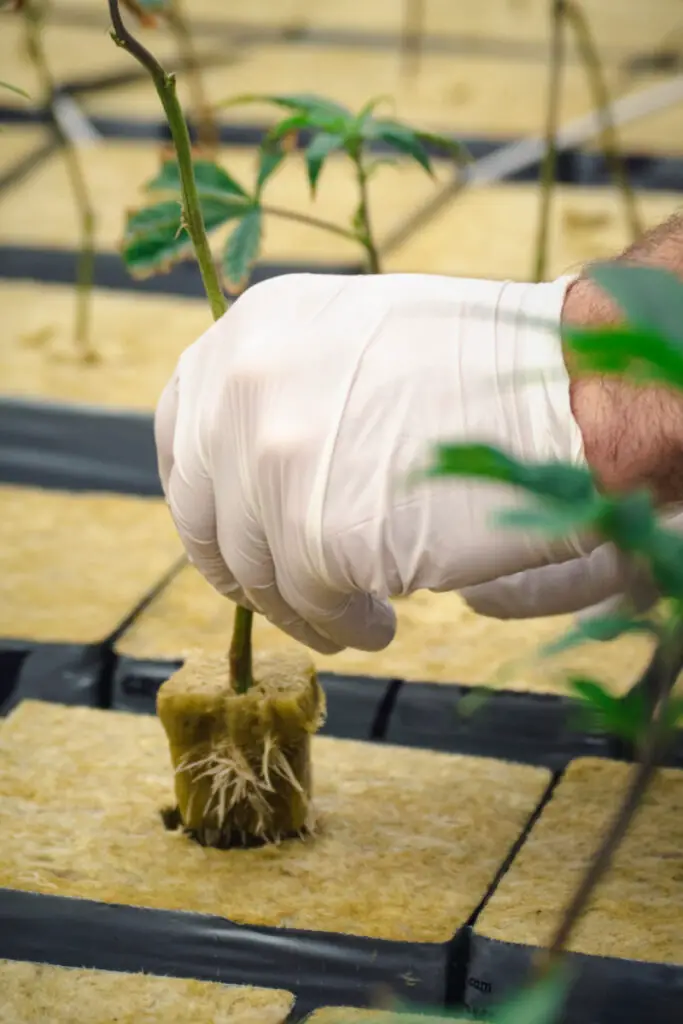
Can you use rockwool as a growing medium in hydroponics?
You can easily and naturally nurture your plants with rockwool’s excellent water retention and airflow properties. This gives them the perfect environment to thrive.
Rockwool cubes are an ideal medium for hydroponic gardening. They offer superior water retention, superior air flow, and can last several years before needing to be replaced.
To use rockwool cubes in hydroponics, they must first be soaked in a nutrient solution for an hour or longer. This creates a more hospitable environment for the seeds and allows for quicker and more consistent germination and growth.
After soaking the cubes, they can be filled with seeds and placed in a dark and dry area for germination. If necessary, light can be added to the area to help promote germination.
Finally, once the seeds have sprouted and have two or three true sets of leaves, they can be transplanted into the hydroponic system. With proper preparation, rockwool cubes can be a great way to start and grow plants in a hydroponic system.
How do you prepare Rockwool cubes for hydroponics?
I always recommend soaking rockwool cubes for an hour or longer in a nutrient solution prior to filling with seeds. This ensures that the cubes are adequately saturated, allowing for better water retention and airflow properties.
Failing to soak the cubes can result in inadequate moisture and nutrition, which can lead to stunted growth or even death of the seedlings.
How long should you soak rockwool?
Soaking your rockwool cubes for at least an hour will help ensure a successful start for your hydroponic plants!
While rockwool cubes can be planted directly into soil, doing so in a hydroponic system is much more difficult and can be disastrous for the health of your plants. That’s why it’s important to soak the cubes in a nutrient solution for an hour or longer prior to planting.
This helps to condition the cubes, allowing them to hold the desired amount of water and nutrients for your plants. It also helps the seeds to germinate more quickly and evenly, ensuring that your plants are off to a strong start.
Soaking your rockwool cubes is an essential step in the hydroponic growing process and should never be overlooked.
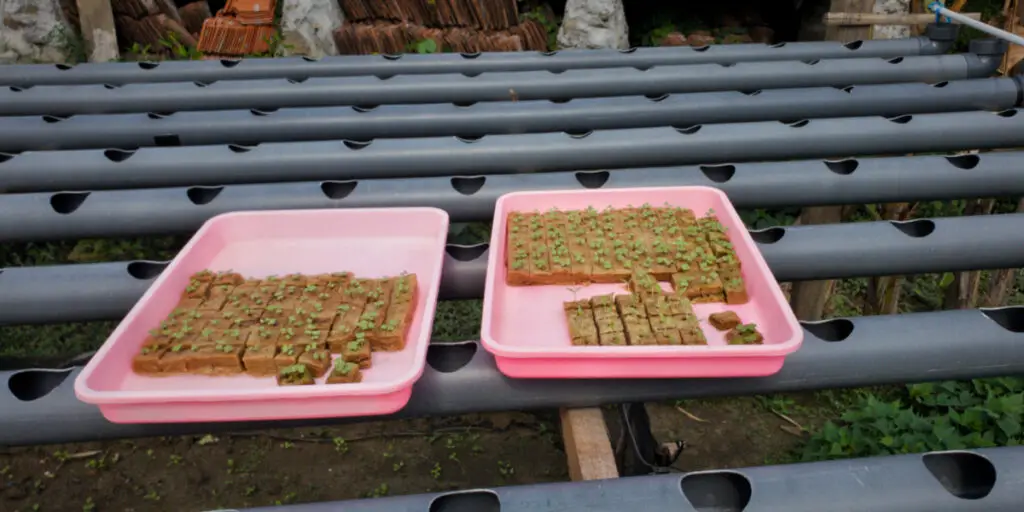
What happens if you don’t soak rockwool?
If you neglect to give your rockwool cubes a good soak, you’ll be in for a nasty surprise – your plants won’t be nearly as happy as they could be! Without a good soak, the rockwool cubes can fail to provide adequate water retention and airflow which can lead to a variety of issues:
- Poor plant growth: Water retention issues can lead to under-watering, stunting plant growth. Airflow issues can lead to root rot and/or mold, both of which can lead to unhealthy plants.
- Poor germination: Seeds may not germinate at all, or may take longer if the cubes are not properly pre-soaked.
- Poor nutrient uptake: Without proper water retention and airflow, plants may not be able to absorb nutrients effectively.
These issues can be avoided by ensuring rockwool cubes are thoroughly soaked prior to use. Doing so will help ensure your plants get the best start possible and that they remain healthy throughout their life cycle. With the right preparation, rockwool cubes can be a great tool for hydroponic gardening.
Do Seeds in Rockwool Need Light?
Get your plants off to a great start with rockwool – they don’t need light to germinate and grow! Unlike other growing methods, rockwool cubes do not require light to start the germination process. This makes it a great option for those who don’t have access to natural sunlight or artificial grow lights.
All you need to do is soak the cubes in water for an hour or longer and then fill them with seeds. Once the seeds have taken root and sprouted, you can begin to provide light to the plants. This light is important for photosynthesis and the overall health of your plants. Providing light will also help the plants to grow faster and stronger.
It is important to remember that rockwool cubes can be planted directly into soil without issue, so you don’t have to worry about transplanting the seedlings into a hydroponic system if you don’t want to.
With rockwool cubes, you can get your plants off to a great start without the need for light. Now it’s time to move on to when to transplant rockwool seedlings into hydroponic system?
When To Transplant Rockwool Seedlings Into Hydroponic System?
Now that you know if your seeds in rockwool need light or not, the next step is knowing when to transplant your rockwool seedlings into a hydroponic system.
The key is to wait until your seedlings have developed two full sets of leaves. This is important because the seedling needs to be well established with a strong root system before transplanting. Generally, this can take anywhere from 5-15 days depending on the type of seed.
Once you see two full sets of leaves, you should carefully remove the rockwool cube from the tray and place it in the hydroponic system.
Make sure you are gentle with the seedlings and do not damage the delicate root system. It is also important to ensure the rockwool cube is completely saturated with water before transplanting.
This will help the roots to adjust to the new environment and to ensure your seedlings have the best chance of success.
Can you touch rockwool with bare hands?
Gently handling the rockwool with your bare hands, you can feel its stony texture and soft fibers, coaxing your seedlings to grow. You can certainly touch rockwool with your bare hands, but it’s important to take the proper precautions to avoid irritation or infection.
Here are some tips to keep in mind when handling rockwool:
- Wear protective gloves to keep your hands dry and free from any contact with the nutrient solution.
- Wash your hands thoroughly after handling the rockwool.
- Avoid touching your eyes or mouth with your hands after handling the rockwool.
With these simple steps, you can safely handle the rockwool with your bare hands and not have to worry about any adverse effects.
Now that you know how to safely touch rockwool, you can move onto the next important step: can you overwater rockwool?
Can you overwater rockwool?
You may be wondering if it’s possible to overwater your rockwool, and the answer is yes; if you leave it in the nutrient solution for too long, or if you water it too frequently, it can become oversaturated and can lead to root rot.
So, how can you avoid this? The key is to be mindful of how long the rockwool is in the nutrient solution and how often you water it. Make sure to remove the cubes from the solution after they have absorbed the desired amount of water and replace the nutrient solution with fresh water every few days.
If the cubes are left in the nutrient solution for too long, they will become oversaturated and can lead to root rot. Additionally, make sure to use the correct amount of water when watering your rockwool. Too much water will cause the cubes to become oversaturated, resulting in root rot. Too little water will result in the cubes drying out and the plants not getting enough moisture.
It’s important to strike the right balance for optimal plant growth.
Can I start seeds in rockwool?
Starting your seeds in rockwool is an easy and efficient way to get your hydroponic garden up and running – it’s a no-brainer! Rockwool cubes provide a natural and safe way to grow plants and are an ideal growing medium for hydroponics due to their excellent water retention and airflow properties. Plus, they can be purchased from major department stores, online retailers, and auction sites.
Here are some tips to remember when starting seeds in rockwool:
- Select the right size cube
- Clean and soak cubes before use
- Plant seeds at least an inch deep in the cube
- Store cubes in a dark and dry location while germinating
These simple steps will ensure your seeds get the best start possible and will help you get the most out of your rockwool cubes.
Now that you’ve got your seeds planted, you’ll want to make sure you provide them with the necessary light and moisture to help them germinate and grow.
Can you touch rockwool with bare hands?
Gloves are recommended when handling rockwool, as it’s a mineral fiber that requires a little extra care; but that doesn’t mean you can’t get up close and personal with your hydroponic garden.
Rockwool is very safe for direct contact with bare hands, so you don’t have to worry about it causing any irritation or damage. Of course, it’s important to ensure that you clean and sterilize the rockwool before handling it, as any pests or disease can be spread from plant to plant.
Additionally, it’s important to only use rockwool from a reliable source and to inspect it for any signs of damage or deterioration before use. With all these precautions in mind, you can confidently use your hands to handle rockwool and start your hydroponic garden with ease.
What is the disadvantage of rockwool in hydroponics?
The downside of rockwool in hydroponic gardens is that it requires extra care and caution, so you’ll need to be mindful when handling it.
Rockwool can be a breeding ground for algae, which can be detrimental to your plants. Algae can quickly take over a hydroponic system, blocking the light and oxygen your plants need to thrive. To prevent this, it’s important to ensure the rockwool is kept dry and not over-watered.
Additionally, you should avoid placing rockwool in direct sunlight, as this can cause algae to form. Rockwool should be soaked in a nutrient solution prior to use and should be replaced every 5-6 uses.
While these extra steps may seem like a hassle, they are essential for maintaining healthy and thriving hydroponic plants.
Does rockwool grow algae?
Hovering over your hydroponic system, you can’t help but wonder: could rockwool be the source of that pesky algae?
Rockwool is a popular growing medium for hydroponic gardening and is made of stonewool, a natural product for horticultural purposes.
Rockwool is ideal for hydroponic gardening due to its excellent water retention and airflow properties, however, it can also be a potential breeding ground for algae.
Algae can form on the surface of rockwool cubes and grow in nutrient-rich water.
The best way to prevent algae formation is to keep the nutrient solution in your hydroponic system clean and free of debris.
Additionally, you can place a plastic cover over the rockwool cubes to block out light and reduce the chances of algae growth.
It is also important to ensure that the rockwool cubes are not exposed to direct sunlight, as this can also lead to algae growth.
With proper maintenance and care, rockwool should not be the source of your algae problems.
Is rockwool hazardous waste?
You may be wondering if rockwool is hazardous waste, given its use in hydroponics. Fortunately, rockwool isn’t considered hazardous waste, due to its innocuous composition.
Rockwool is made from two natural materials: basalt and slag, both of which are considered non-toxic and safe for use in hydroponics. The rockwool cubes also have no chemical additives, making them an ideal substrate for hydroponic gardening. The rockwool cubes are also biodegradable, so when they are no longer usable, they can be safely disposed of.
Furthermore, the cubes can be reused up to 5-6 times before needing to be replaced, making them a cost-effective and efficient way to start and grow plants. Rockwool cubes are a safe, natural, and no-brainer way to grow plants hydroponically and are a must-have for anyone starting plants at home.
With all of these benefits, it’s no wonder why rockwool cubes are a secret weapon used by many hydroponic gardeners. Since rockwool is non-toxic and biodegradable, the next step is to explore what sizes does rockwool have available?
What sizes does rockwool have?
Having answered the question of whether or not rockwool is hazardous waste, let’s explore another important aspect of it: what sizes does rockwool come in?
Rockwool cubes are a popular growing medium for hydroponic gardening and are made of stonewool, a natural product for horticultural purposes. They come in a variety of sizes, ranging from 1x1x1.5, 1×1.5×1.5, and 2x2x1.5 inches. These cubes are ideal for hydroponic gardening because they have excellent water retention and airflow properties, and can be reused up to 5-6 times.
They can also be soaked in nutrient solutions prior to filling with seeds, and benefit from soaking for an hour or longer. Rockwool cubes can be purchased from major department stores, online retailers, and auction sites, and are a cost-effective and efficient way to start and grow plants.
With this information in hand, we can move on to the next important question: is rockwool organic?
Is Rockwool organic?
If you’re looking for a natural, safe way to grow your plants, then rockwool is the perfect choice.
Rockwool is a rock-based mineral fiber made of basalt and slag, and is a popular growing medium for hydroponic gardening. It has excellent water retention and airflow properties, and can last several years.
While it is not technically organic, it is a natural product for horticultural purposes, making it a safe and viable option for those looking for an organic way to grow their plants.
Rockwool cubes come in various sizes and can be purchased from major department stores, online retailers, and auction sites. They’re an efficient and cost-effective way to start and grow plants, and can be used to grow a variety of plants.
Can Rockwool Cubes Be Reused?
Reusing rockwool cubes is a no-brainer; they’re like little sponges that absorb moisture and provide a stable environment for germinating and growing plants, making them an invaluable asset in any gardener’s toolkit.
Rockwool cubes can be reused up to 5-6 times, depending on their age and condition. They should be soaked in nutrient solution before filling with seeds, and it’s recommended to soak them for an hour or longer.
It’s also recommended to wait until the seedlings have two to three full sets of leaves before transplanting into a hydroponic system.
Additionally, rockwool cubes can also be planted directly into soil without any issues.
By reusing rockwool cubes, gardeners are able to save money and reduce waste. With proper maintenance and care, rockwool cubes can be used over and over again, making them a great investment for hydroponic gardeners.
What Hydroponic plants Can I Grow With Rockwool Cubes?
You can grow a variety of plants with rockwool cubes, from lettuces and herbs to tomatoes and peppers. They’re the perfect medium for hydroponic gardening. The properties of rockwool cubes provide excellent water retention and airflow, making them ideal for growing plants in a hydroponic system.
Here are some of the plants that you can grow with rockwool cubes:
- Leafy Greens: Lettuces, Kale, Spinach, Collards
- Herbs: Basil, Parsley, Cilantro, Oregano
- Vegetables: Tomatoes, Peppers, Eggplants, Squash
- Fruits: Strawberries, Watermelons, Cantaloupes
Using rockwool cubes is an efficient, cost-effective, and natural way to start plants at home, and they can be reused up to 5-6 times. With the right care, they can last several years.
So, with rockwool cubes, you can easily grow a variety of plants in your own hydroponic garden.
Now, let’s take a look at whether or not these cubes can be planted in soil.
Can Rockwool Cubes Be Planted in Soil?
Yes, you can absolutely plant rockwool cubes in soil! The cubes are a natural and safe way to grow plants, and they can be used as a substrate, germination tool, and rooting agent.
In fact, they are a great way to start and grow plants cost-effectively and efficiently. Rockwool cubes are made of a rock-based mineral fiber, typically composed of basalt and slag. They are an excellent choice for hydroponic gardening because of their superior water retention and airflow properties.
Before planting a rockwool cube in soil, you should soak it in a nutrient solution for an hour or longer. This will help to ensure that your plants have the nutrients they need to thrive. Once your seedlings have two to three full sets of leaves, you can transplant them into your soil.
Once in the soil, rockwool cubes will provide your plants with a steady supply of nutrients and moisture. This makes them a no-brainer for hydroponic gardeners who want to start and grow plants with minimal maintenance.
With a few simple steps, you can start and grow healthy plants with rockwool cubes in soil.
Conclusion
I’ve come to the conclusion that rockwool cubes are an amazing growing medium for hydroponics. They have become a symbol of successful hydroponic gardening, as they provide all of the necessary components for a thriving garden.
The water retention and airflow properties make them an ideal choice for anyone looking to start and grow plants in a hydroponic system.
I’m confident that by following the tips and guidelines outlined in this article, you’ll be well on your way to having a successful hydroponic garden with rockwool cubes.

